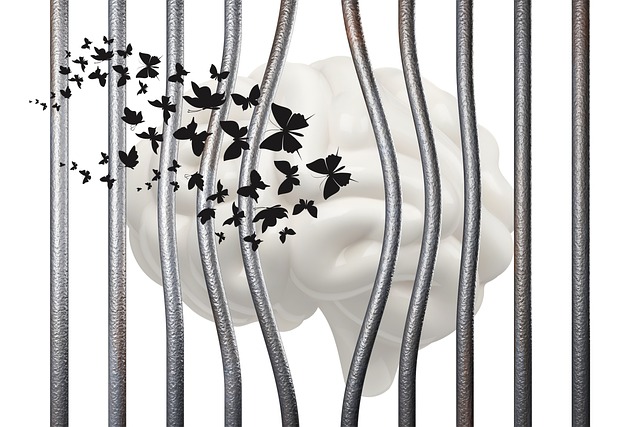How Trauma Rewires Your Body and Mind
Trauma doesn’t just live in your mind—it embeds itself in your body.
For those with Complex Post-Traumatic Stress Disorder (CPTSD), the effects of trauma go far beyond flashbacks and emotional pain.
It rewires your nervous system, leaving you stuck in a cycle of hypervigilance, exhaustion, or emotional numbness.
But here’s the good news: understanding how trauma impacts your nervous system is the first step toward healing.
In this article, we’ll explore:
What CPTSD is and how it differs from PTSD.
- How trauma hijacks your nervous system and creates lasting physical and emotional symptoms.
Practical strategies to heal and restore balance to your nervous system.
Lets get started!
What is Complex PTSD? A Brief Overview
Complex PTSD is a psychological condition that arises from prolonged or repeated trauma, often occurring in childhood.
Unlike PTSD, which typically results from a single traumatic event, CPTSD develops after months or years of exposure to traumatic situations, such as:
Childhood abuse or neglect.
Domestic violence.
Chronic emotional invalidation.
Living in a war zone or high-stress environment.
Key symptoms of CPTSD include:
Emotional flashbacks.
Difficulty regulating emotions.
Feelings of shame or worthlessness.
Struggles with relationships and trust.
A constant sense of being on edge or shut down.
While CPTSD is often misunderstood, it’s crucial to recognize that it’s not just “in your head.” It’s a whole-body experience that deeply impacts your nervous system.
The Nervous System: Your Body’s Alarm System
To understand how trauma affects the body, we need to look at the autonomic nervous system (ANS).
The ANS regulates involuntary bodily functions, such as heart rate, digestion, and breathing. It has two main branches:
Sympathetic Nervous System (SNS): Activates the “fight or flight” response, preparing your body to face danger.
Parasympathetic Nervous System (PNS): Governs the “rest and digest” response, helping your body recover and conserve energy.
In a healthy nervous system, these two branches work in harmony. But trauma disrupts this balance, leaving you stuck in survival mode.
How Trauma Hijacks the Nervous System
Trauma doesn’t just affect your thoughts—it rewires your brain and nervous system. Here’s how:
The Science of Trauma and the Nervous System
When you experience trauma, your brain perceives it as a life-threatening event. This triggers the amygdala (your brain’s alarm system) to activate the SNS, flooding your body with stress hormones like cortisol and adrenaline.
Over time, repeated trauma can cause your nervous system to become dysregulated. This means:
Your SNS is overactive, leaving you in a constant state of hyperarousal (anxiety, panic, or irritability).
Your PNS is underactive, making it hard to relax or feel safe.
The Polyvagal Theory and Trauma
Developed by Dr. Stephen Porges, the polyvagal theory explains how trauma affects the vagus nerve, a key part of the PNS. When the vagus nerve is impaired, you may experience:
Chronic fatigue or dissociation (a “freeze” response).
Difficulty connecting with others or feeling present in your body.
The Physical and Emotional Symptoms of a Dysregulated Nervous System
When your nervous system is out of balance, it can manifest in a wide range of symptoms.
These are your body’s way of signaling that something is wrong.
Physical Symptoms
Chronic pain or tension (e.g., headaches, back pain).
Digestive issues (e.g., IBS, nausea).
Insomnia or restless sleep.
Autoimmune disorders or frequent illnesses.
Rapid heart rate or shortness of breath.
Emotional Symptoms
Anxiety or panic attacks.
Depression or emotional numbness.
Emotional flashbacks (feeling like you’re reliving past trauma).
Difficulty trusting others or forming close relationships.
A constant sense of being on edge or shut down.
These symptoms are not “all in your head.” They’re the result of a nervous system that’s been overwhelmed by trauma.
Healing the Nervous System: Strategies for Recovery
The good news is that your nervous system is resilient.
With the right tools and support, you can rewire your brain and body to feel safe again.
Here are some proven strategies to help you heal:
1. Somatic Practices
Somatic therapies focus on releasing trauma stored in the body. These practices can help regulate your nervous system and restore balance:
Grounding Techniques: Use your senses to stay present (e.g., name 5 things you can see, 4 you can touch, 3 you can hear, 2 you can smell, and 1 you can taste).
Breathwork: Slow, deep breathing activates the PNS and calms the SNS. Try the 4-7-8 technique: inhale for 4 seconds, hold for 7 seconds, exhale for 8 seconds.
Yoga or Tai Chi: These gentle movements help release tension and reconnect you with your body.
2. Therapy Modalities
Working with a trauma-informed therapist can be life-changing. Some effective therapies for CPTSD include:
EMDR (Eye Movement Desensitization and Reprocessing): Helps process traumatic memories and reduce their emotional impact.
Somatic Experiencing: Focuses on releasing trauma stored in the body.
Trauma-Focused CBT (Cognitive Behavioral Therapy): Helps reframe negative thought patterns related to trauma.
3. Lifestyle Changes
Small, consistent changes can have a big impact on your nervous system:
Prioritize Sleep: Aim for 7-9 hours of quality sleep each night. Create a calming bedtime routine to signal to your body that it’s safe to rest.
Nourish Your Body: Eat a balanced diet rich in whole foods, and avoid excessive caffeine or sugar, which can overstimulate the SNS.
Reduce Stressors: Identify and minimize environmental triggers, whether it’s toxic relationships or an overwhelming workload.
4. Building Safety and Connection
Healing from trauma requires feeling safe—both within yourself and in your relationships. Here’s how to cultivate safety:
Practice Self-Compassion: Treat yourself with kindness and understanding, especially during difficult moments.
Seek Support: Connect with trusted friends, family, or a support coach who validate your experiences.
Set Boundaries: Learn to say no to situations or people that drain your energy or trigger your trauma.
The Role of Self-Compassion and Patience in Healing
Healing from CPTSD is not a linear process. There will be ups and downs, and that’s okay. Here’s why self-compassion and patience are essential:
Healing Takes Time: Your nervous system didn’t become dysregulated overnight, and it won’t heal overnight either. Celebrate small victories along the way.
Setbacks Are Normal: It’s normal to have days where you feel like you’re back at square one. This doesn’t mean you’ve failed—it’s part of the journey.
You’re Not Alone: Reach out for help when you need it. Whether it’s a therapist, support group, or trusted friend, you don’t have to do this alone.
Conclusion
CPTSD is more than a mental health condition—it’s a whole-body experience that rewires your nervous system and impacts every aspect of your life.
But by understanding how trauma affects your body and mind, you can take steps to heal and reclaim your sense of safety.
Remember, healing is a journey, not a race.
Be patient with yourself, and know that with time, care, and the right tools, you can restore balance to your nervous system and build a life filled with peace and connection.
FAQS
Can you fully heal from CPTSD?
Yes, with the right support and strategies, many people experience significant healing and improvement in their symptoms.
How long does it take to regulate the nervous system after trauma?
Healing timelines vary, but consistent practice of nervous system regulation techniques can lead to noticeable improvements within weeks or months.
What are the best therapies for CPTSD?
EMDR, somatic experiencing, and trauma-focused CBT are among the most effective therapies for CPTSD.
Books & Podcasts
The Body Keeps the Score by Bessel van der Kolk.
Complex PTSD: From Surviving to Thriving by Pete Walker.
Podcast: The Trauma Therapist
- The Trauma Therapist Podcast. (Host: Guy Macpherson, PhD).
- Workbook for Complex PTSD: From Surviving to Thriving: A Guide And Map For Recovering From Childhood Trauma
By taking the first step toward understanding and healing your nervous system, you’re already on the path to recovery. You’ve got this.
Sources & Citations
Additional Books:
Van der Kolk, B. (2014). The Body Keeps the Score: Brain, Mind, and Body in the Healing of Trauma.
A foundational book on how trauma affects the body and mind, with insights into nervous system dysregulation and healing modalities.
Walker, P. (2013). Complex PTSD: From Surviving to Thriving. Azure Coyote Publishing.
A comprehensive guide to understanding and recovering from CPTSD, including practical strategies for healing.
Porges, S. W. (2011). The Polyvagal Theory: Neurophysiological Foundations of Emotions, Attachment, Communication, and Self-Regulation. W.W. Norton & Company.
Explains the polyvagal theory and its role in understanding trauma responses and nervous system regulation.
Levine, P. A. (1997). Waking the Tiger: Healing Trauma. North Atlantic Books.
Introduces somatic experiencing as a method for releasing trauma stored in the body.
Research Studies and Articles
American Psychological Association (APA). (2020). Trauma and Shock.
- https://www.apa.org
- Provides an overview of how trauma impacts the brain and body, including the nervous system
National Institute of Mental Health (NIMH). (2023). Post-Traumatic Stress Disorder (PTSD).
- https://www.nimh.nih.gov/
- Discusses the symptoms and treatment options for PTSD and CPTSD
Shapiro, F. (2018). Eye Movement Desensitization and Reprocessing (EMDR) Therapy: Basic Principles, Protocols, and Procedures. Guilford Press.
A detailed guide to EMDR therapy, a proven treatment for trauma.
Websites and Online Resources
The Polyvagal Institute. (2023). What is Polyvagal Theory?
- https://www.polyvagalinstitute.org/
Offers resources and explanations of the polyvagal theory and its applications in trauma recovery.
Somatic Experiencing International. (2023). What is Somatic Experiencing?
- https://traumahealing.org
Provides information on somatic experiencing therapy and its benefits for trauma survivors.
Psychology Today. (2023). Complex PTSD: Symptoms, Causes, and Treatment.
- https://www.psychologytoday.com
A comprehensive article on CPTSD, including its impact on the nervous system.
Bessel van der Kolk on The Tim Ferriss Show. (2017).
- https://tim.blog
An in-depth interview with Bessel van der Kolk on trauma and healing.
Additional Resources
International Society for Traumatic Stress Studies (ISTSS). (2023). Trauma and the Nervous System.
- https://www.istss.org
Offers research and resources on trauma and its effects on the body and mind.
Harvard Medical School. (2021). Understanding the Stress Response.
- https://www.health.harvard.edu
- Explains how stress and trauma impact the nervous system and overall health.



